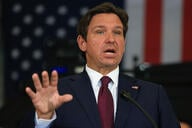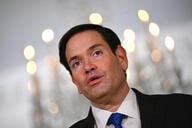You have /5 articles left.
Sign up for a free account or log in.
The Foundation for Individual Rights in Education on Tuesday released a nationwide survey of college and university bias response teams, saying they pose a growing threat to free speech on campus. The report identified 232 public and private institutions with bias response programs in 2016, saying that 42 percent list law enforcement personnel as team members -- what FIRE called “literal speech police.”
“Inviting students to report a broad range of speech to campus authorities casts a chilling pall over free speech rights,” Adam Steinbaugh, senior program officer at FIRE, said in a statement. “Bias response teams solicit reports of a wide range of constitutionally protected speech, including speech about politics and social issues. These sometimes anonymous bias reports can result in interventions by conflict-wary administrators who then provide ‘education,’ often in the form of a verbal reprimand, or even explicit punishment.”
Citing a controversial case at the University of Northern Colorado last year that resulted in the dismantling of a bias response team, Steinbaugh said that institutions “may rightly take action against a wide variety of conduct.” But in asking students to report incidents of “pure, protected speech simply because someone claims he or she found it offensive,” he said, “colleges are sending the destructive message that the way for students to handle speech they don’t like is not by challenging it in the marketplace of ideas, but by reporting it to authorities.”
Kevin Kruger, president of NASPA: Student Affairs Professionals in Higher Education, challenged FIRE’s assessment somewhat, saying that bias response teams “play an important role in responding to behavioral incidents on campus around issues such as race, ethnicity, religion and gender identity.” Their design and intent is to make “a clear distinction between free speech and actual behavior that causes physical harm or speech that is harassment or threatening,” he added. “A well-developed bias response protocol provides a clear and consistent mechanism to respond to students most directly affected by the bias incident.”
Kruger said the distinction between protected speech and threatening or harmful behavior is “critical.” So even in cases in which reported speech or behavior is clearly protected, he said, teams can play an “important educational role in reinforcing the value of diverse and often controversial speech on a college campus.”





